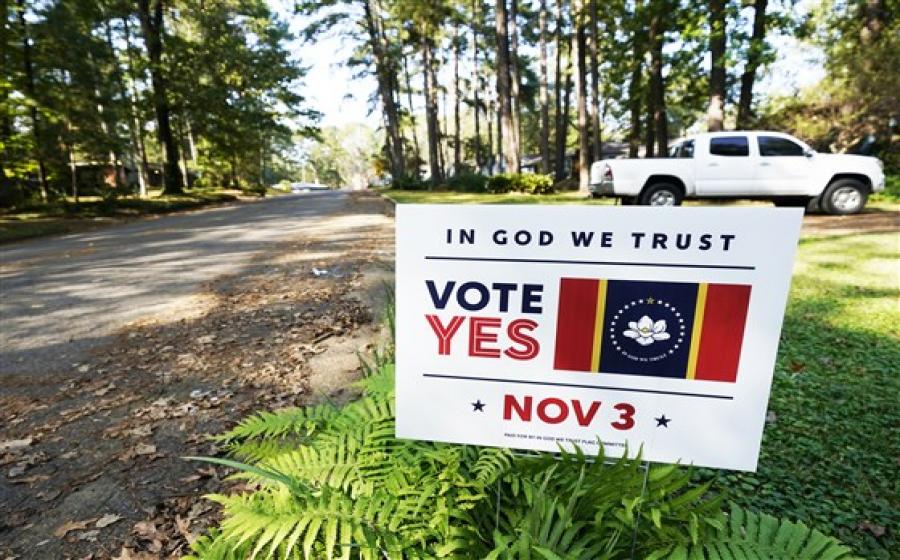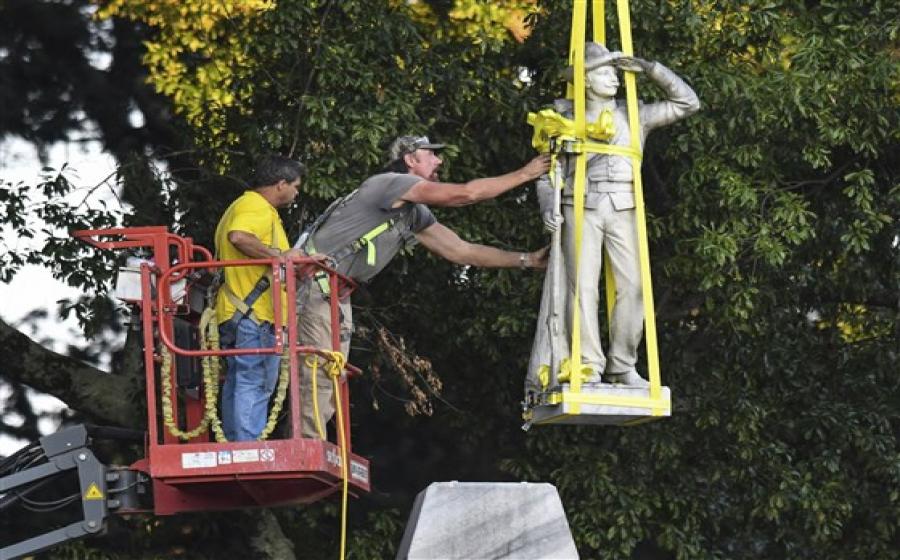News Article 1
JACKSON, Miss. — Eighth grader Ethan Lott had seen the Confederate battle emblem plenty of times, but he didn’t connect it with Mississippi’s state flag.
The 13-year-old had spotted the emblem — a blue X against a red square with 13 white stars — on bumper stickers and flags in front of some homes here. But it wasn’t flown in his middle school, which only raised the American flag. Ethan thought the state flag, which included the Confederate emblem in the upper left corner, was just one “white people had when they didn’t like Black people.”
“He was taken aback,” said LaShunna McInnis, principal of Powell Middle School, who discussed the flag with Ethan. “I could see it in his face.”
McInnis had called Ethan to ask if he would participate in a ceremony that would take place at the school if voters chose the new flag.
In the years before the vote, the state flag had gradually disappeared from public schools in Mississippi’s capital. Several districts in the Mississippi Delta, too, and in other pockets of the state took down the flag with its Civil War iconography, electing to fly only the American flag.
Most of these districts were nearly all-Black and Black-led. On these campuses, leaders resisted, or at least never prioritized, displaying a symbol that has long been viewed as racist by many in the nation’s Blackest state even though Mississippi law required public schools to fly it.
Now, after Mississippi voted overwhelmingly on Tuesday to replace the flag’s Confederate imagery with one featuring the state’s official flower, a magnolia, and the phrase “In God We Trust,” schools that balked at flying the state flag are now planning to hoist it for the first time in recent history.
McInnis, who is Black, watched “The Dukes of Hazzard” growing up. As a child, she didn’t think much about the rebel flag on top of “General Lee,” a car featured prominently on the show named after Gen. Robert E. Lee, the Confederate army leader. But as a principal of a school where almost all the students are Black and some live with grandparents or older relatives who lived through the Jim Crow South, or whose parents did, she thought differently.
“Having that flag flying above definitely would have been a source of tension,” she said.
Frank Figgers, vice chair of the Veterans of the Mississippi Civil Rights Movement, says some school districts likely removed the state’s flag after the passage of the 1965 Civil Rights Voting Act. Black voting power helped to diversify elected school boards that then quietly had the flags taken down. Other schools, he said, likely never displayed the banner even during segregation.
Growing up in 1960s Mississippi, Cheryl Turner couldn’t escape the symbol once carried into battle by Confederate soldiers. The image was always looming. On walks home from school when Turner and her siblings would look for pecans on the grounds of the state Capitol in Jackson, the state flag was waving in the background.
The shadow of the Confederacy was also cast over her elementary school, which had recently begun integrating when she started fifth grade there in 1966.
At the time, the campus was named for Jefferson Davis, president of the Confederacy. She was spared from the mobs that had attacked Black children integrating schools in the north Mississippi town of Grenada that same year, but she still has hurtful memories. A white teacher questioned whether Turner and other Black students would be able to keep pace with their lessons.
She’s not sure if the state flag flew at her elementary school. But in college, she couldn’t miss it.
At the University of Mississippi, crowds waved the rebel flag like pompoms inside Vaught-Hemingway Stadium so much that she didn’t feel comfortable attending football games to watch a home team nicknamed the Rebels.
“Being a student there was the first time I really felt the angst of the flag,” she said.
The defiance of some public schools in deciding to ignore state law and not fly the flag ignited a failed attempt in the state Legislature in 2015 to potentially strip accreditation from such districts. A white state representative told reporters that the legislation was prompted by the flag’s absence from schools, The Clarion Ledger reported. The measure passed in the House Education Committee, but failed to become law. In 2016, a woman sued a north Mississippi school district in an attempt to force officials to fly the flag.
The Legislature’s turnaround from potentially punishing districts for not flying the flag to replacing it happened amid widespread demonstrations across the nation against racial injustice this summer.
In June, thousands marched in downtown Jackson in one of the largest protests in the state in decades. A new state flag was among the demands.



Add new comment